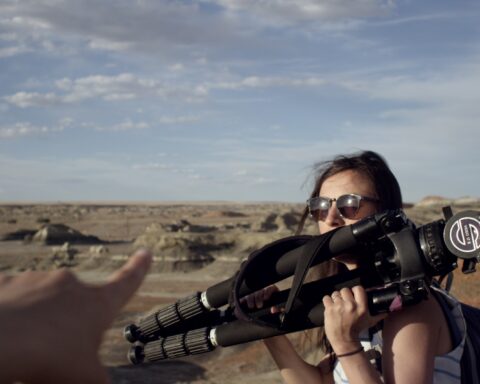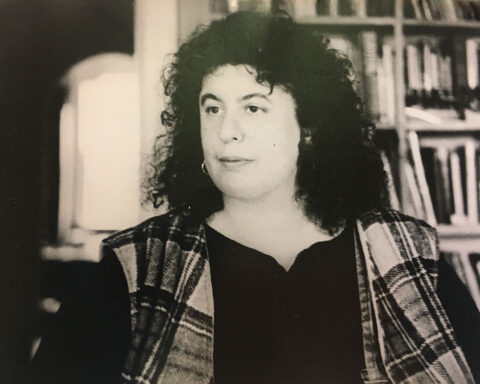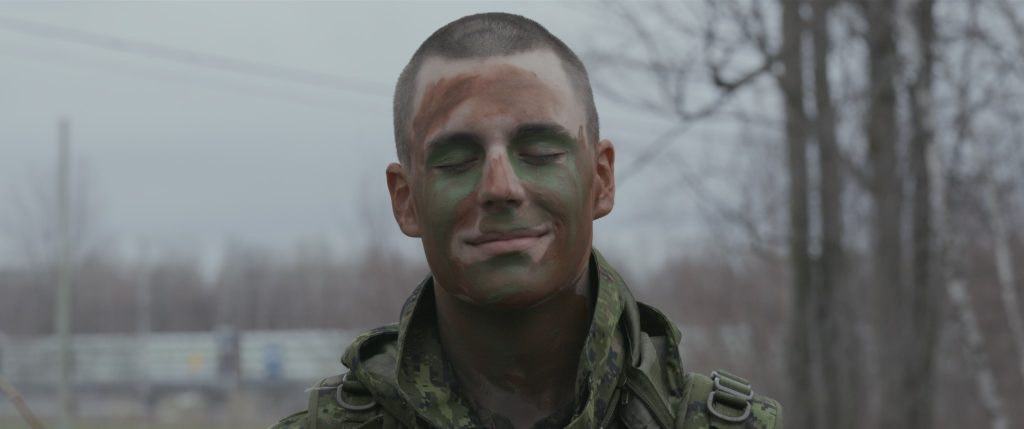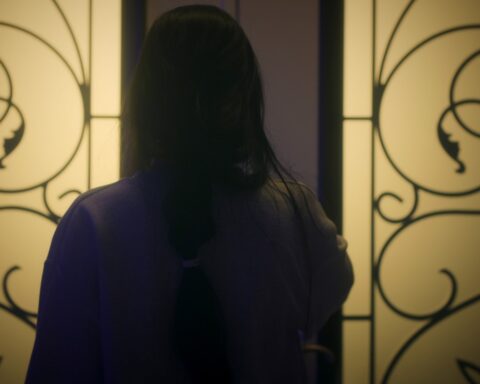Thessaloniki is built on millennia of history: there are traces of the prosperous world of Philip II, who employed Aristotle to teach his young son, Alexander, who became known as ‘the Great,’ through successive epochs of settlement, conquest and trade. It is said that it is taking so long to build the Metro because of the layers of artifacts that must be carefully retrieved, to be displayed later at small museums at every stop. And history doesn’t stop. In the twentieth century, the era of Thessaloniki (Salonica) as a centre of Jewish commerce and learning was destroyed when 50,000 Jews were rounded up, humiliated, and sent on trains to camps and their death. A small memorial was erected on the site where they were brought as part of the Nazi action: it is now a parking lot on the edge of the Aegean Sea. (It may also be the spot where St Paul landed at Salonica, but that’s another story.)
This was our third visit to the Thessaloniki Documentary Film Festival and it continues to impress. The festival’s offices are in a building with two cinemas on the glorious main square, just two blocks from the sea. A ten minute walk from the square on the boardwalk bordering the sea takes you to a renovated warehouse district, which houses four newer cinemas, an art gallery and a media centre, which also serves as a hospitality area for the film professionals attending the festival.
The selection of films includes curated series, historical retrospectives and a range of international films, as well as a strong showing of Greek films. There was an impressive Carte Blanche by Sara Driver, mainly of experimental films from the US of the 1960s, and a tribute to Agnès Varda.
Radical politics and the surprising people who participate in them are the subject of Golden Dawn Girls, a Norwegian documentary. Fascinating and disturbing, Golden Dawn Girls follows women who are close to the leadership of the far-right party that won 7% of the vote in national Greek elections in 2015 as their male relatives are jailed, accused of running a criminal organisation masquerading as a political party. Among the accusations were murder, armed attacks, money laundering and trafficking.
Havard Bustnes is Norwegian filmmaker who gained the trust of the wife of a leader of the far-right Greek party, Golden Dawn. As she introduces him to two of her female friends (the mother of another leader, the daughter of the most senior leader), the three male leaders are arrested on charges that keep them in prison for two years. During those years, the three women take over the leadership of the party, continuing to foster the same attitudes and behaviours. A fascinating look inside a party that won a significant increase in support in the 2015 general election in Greece, and inside gender dynamics. While their men were unavailable, the women were respected as leaders. The moment the men are released, the women disappear into their traditional roles. The filmmaker plays on the naivete of the women by presenting himself as sympathetic, displaying a shared interest in heavy metal music, for example. They are drawn to the notion that they will be able to tell their story. We see the women as confident, articulate leaders, with pets and children. They remain wary, though, and only reveal the truth about their intent-–and their arsenal–-after the men are released. The parallels to, for example, Charlottesville, are visible and disturbing. The film makes Greeks uncomfortable –as we observed when we asked otherwise friendly local people about it.
Immigration, and especially the ongoing arrival of people from Africa and conflict zones to the east, along with the aftermath of the austerity imposed by the European Union, contributed to the rise of Golden Dawn in Greece. Abel Ferrara observed some of the same strains but in a messier and yet more comfortable way in the famed Piazza Vittorio, one of the largest squares in Rome. The Piazza is home to a huge diversity of people who have arrived in Italy illegally and legally, and have made it their home. Ferrara declines to tell a narrative tale, instead wandering around the neighbourhood, meeting homeless people and restaurateurs, celebrities and unknowns, as they go about their day. Piazza Vittorio represents the same pressures as Greece is experiencing; Italy’s politics appear no less divided than those of Greece.
Politics of a different sort altogether feature in Thank You For The Rain, by another Norwegian filmmaker, Julia Dahr. The prolonged drought in Kenya requires ingenuity and persistence on the part of Kisilu, a local farmer, as he tries to persuade his neighbours to plant trees. Climate change and its direct impact on people are confronted by the filmmaker’s camera. This is a story of the evolution of a young man into an international activist: when he agrees to let Dahr spend a month filming him, he demands that he also have a camera. His video diary entries show his love and appreciation for his wife and family as they deal with famine and his constant absences. The film, which was made over at least five years, takes on international significance and demands a change of perspective from the audience: Kisilu is invited first to Norway, and then to the Climate Change conference in Paris. The over abundance in both places, and the inaction of politicians, stand in stark contrast to the subsistence of a Kenyan farmer determined to save his family and community.
Films about art and artists featured prominently at Thessaloniki. Eric Clapton: A Life In Twelve Bars was a popular feature; A Visit to June Leaf’s Studio – My First Film by Brigid Kennison showed us the vibrant world of the octogenarian artist (and wife of photographer/filmmaker Robert Frank). Leaning Into the Wind: Andy Goldsworthy is a second look at the famous land artist by filmmaker Thomas Riedelsheimer. This one features more of the astonishing work he has created on his own property and elsewhere and introduces his daughter as his assistant.
Who is Marianne Faithfull? Those of us of a certain age will remember her sudden arrival on the 60s pop scene with her naïve rendition of As Tears Go By, followed by her affair with Mick Jagger during the heyday of the Rolling Stones. A long gap followed – then her re-emergence as a unique and powerful voice with_ Broken English_. Sandrine Bonnaire, director of Faithfull, tries hard to get to the heart of Faithfull, now an elegant 70-something, still performing and living in France. Fortunately, there is a lot of archival footage from those early days to give us the back story.
Without planning it, I viewed quite a few films by and about older women. Las Cinephilas is a charming film about women who love movies. The entire festival audience identified with the women who are dedicated to the art of cinema. Filmmaker Maria Alvarez introduces us to six women in Buenos Aires, Madrid and Montevideo–all retired and living alone–for whom visits to the theatre are part of their everyday routine. We watch as they go about their visits to cafes or a hair salon, walk to the cinema, wait for the film to start. They tell us about their favorite films. Some of them talk about family or a partner. Some face failing health and mobility. Each in her own way is like us: choosing carefully which films to see, spending hours in the dark looking up at the screen.
For us, Thessaloniki is a mixture of charms: the beauties of the locale are matched by the films we see in the festival’s theatres. For lovers of documentary, the Thessaloniki festival is well worth the trip.












